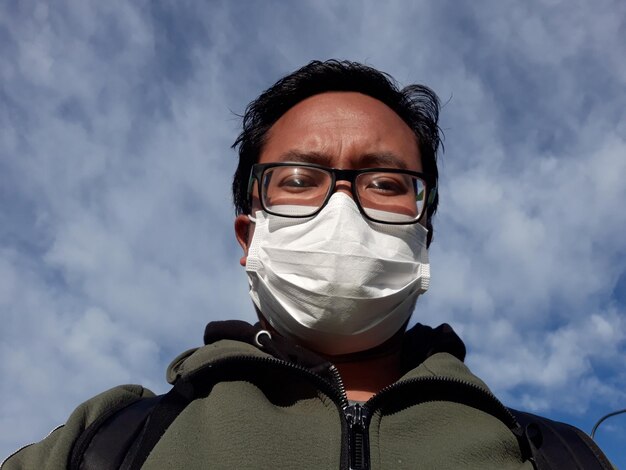Is the Chickenpox Virus Airborne? Here’s What You Should Know
When it comes to contagious diseases, understanding how they spread is crucial for prevention. One common yet often misunderstood illness is chickenpox, caused by the varicella-zoster virus. This article explores whether chickenpox is airborne, providing a comprehensive look into its transmission and offering practical tips for prevention.
Unpacking Airborne Transmission
Airborne transmission refers to the spread of viruses or bacteria through droplet nuclei (tiny respiratory droplets) that remain suspended in the air. These particles can be inhaled by someone nearby, allowing the virus to infect new hosts.
Is Chickenpox Truly Airborne?
Yes, chickenpox is considered an airborne illness. The varicella-zoster virus can be transmitted through droplets expelled when a person coughs, sneezes, or even talks. These droplets can travel through the air, potentially infecting anyone who breathes them in.
- Droplet Range: While the droplets can disperse into the air, they typically do not travel as far as infectious agents spread by smaller particles.
- Environmental Conditions: Factors such as ventilation and humidity can affect how long these droplets remain airborne and viable.
Other Modes of Transmission
Besides airborne spread, the chickenpox virus can also be transmitted through direct contact. Here's how:
- Contact with Blisters: Touching the fluid from a chickenpox blister can lead to infection.
- Contaminated Surfaces: The virus can also survive on surfaces for a brief period, potentially infecting someone who touches their face after handling contaminated objects.
Protecting Yourself and Others
Understanding the modes of transmission can help you take preventative measures to avoid spreading or catching the virus.
Vaccination: Your Best Defense
The most effective way to prevent chickenpox is through vaccination. The chickenpox vaccine is highly effective at protecting against the virus.
- Vaccine Schedule: It’s typically given in two doses, the first between 12 and 15 months of age and a second dose between 4 and 6 years of age.
Practical Tips for Avoiding Infection
Even if you're vaccinated, practicing good hygiene can further reduce your risk:
- Wash Your Hands Frequently: Keep your hands clean with soap and water, especially after being in public spaces.
- Avoid Close Contact: Stay away from infected individuals and crowded areas if chickenpox is known to be circulating.
- Disinfect Surfaces: Regularly clean surfaces like doorknobs and light switches that are frequently touched.
Chickenpox Symptoms and Infectious Period
Recognizing the symptoms of chickenpox can help in managing the infection’s spread.
Initial Symptoms
The early signs of chickenpox include:
- Fever and Fatigue: Often the first indicative symptoms.
- Rash Development: Progresses from small red spots to itchy blisters covering various parts of the body.
Contagiousness
A person with chickenpox is typically contagious from about one to two days before the rash appears until all blisters have crusted over.
- Isolation Recommendations: To prevent spreading, infected individuals should avoid public spaces until they’re no longer contagious.
Complications and Considerations
While chickenpox is often mild, it can lead to complications, especially in certain groups.
High-Risk Groups
Those at a greater risk for severe illness include:
- Pregnant Individuals: Chickenpox can be serious for pregnant people and their babies.
- Immunocompromised Individuals: People with weakened immune systems might experience more severe symptoms.
- Newborns: Infants are also more susceptible to complications.
Potential Complications
Chickenpox can lead to issues such as:
- Secondary Infections: Skin infections due to scratching blisters.
- Pneumonia: A risk in adults and those with weakened immunity.
- Neurological Issues: Rare, but possible, including encephalitis or cerebellitis.
Navigating the Path to Recovery
Recovery from chickenpox mainly involves managing symptoms at home. Here are some supportive care approaches:
Managing Symptoms
- Anti-Itch Solutions: Use calamine lotion or antihistamines to reduce itching.
- Fever Management: Acetaminophen can help control fever. Aspirin should not be used due to the risk of Reye’s syndrome in children.
When to Seek Medical Advice
Although a mild disease in many, professional medical assessment becomes necessary if:
- High fever persists.
- The rash spreads to the eyes.
- Breathing difficulties occur.
Summarizing Key Points: Stay Informed and Prepared
Understanding the ways chickenpox spreads and implementing strategies to prevent it is key to safeguarding public health.
- ✅ Transmission: Chickenpox spreads both airborne through droplets and by direct contact.
- 🛡️ Prevention: The chickenpox vaccine is the most effective prevention method.
- 👶 Vulnerable Groups: Certain groups, like pregnant individuals and those with weakened immune systems, are more at risk.
- 🏠 Home Care: Manage symptoms with calamine lotion, hydration, and rest.
By staying informed and adopting proactive measures, you can effectively protect yourself and those around you from the varicella-zoster virus. Taking these steps not only reduces the spread of the virus but also contributes to community health and well-being.

Related Articles
- Can Adults Get Chickenpox
- Can You Contract Chickenpox From Shingles
- Can You Get Chickenpox Twice
- Can You Get Shingles If You Had Chickenpox
- Can You Get Shingles If You Never Had Chickenpox
- How Chickenpox Transmitted
- How Do You Get Chickenpox
- How Does Chickenpox Spread
- How Long Does Chickenpox Last
- Is Chickenpox Airborne